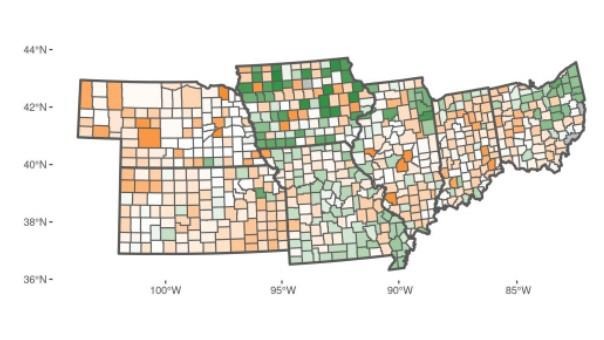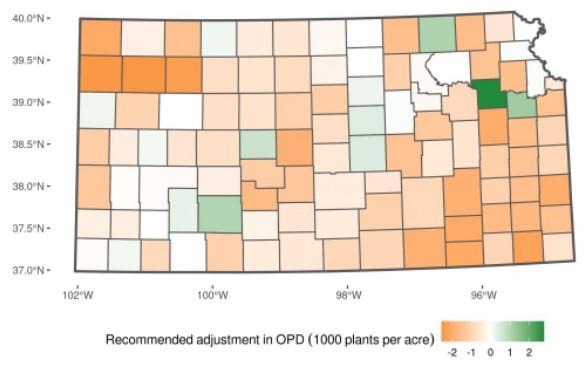Based on the weather forecasts released in March, there is a clear signal indicating the need to consider using lower-than-normal plant densities for dryland corn in many areas of Kansas this spring. That is due to the combination of predicted below normal rainfall and high temperatures (Figure 1). Many sections of the state show a potential need to reduce optimal plant density (OPD) for corn (at least 2,000 plants/acre) to adjust for the current and expected weather conditions.


Figure 1. Change in the forecasted optimum plant density (OPD) for the 2022 summer season, relative to the 2018 optimum plant density for corn (wet year) across the region and in Kansas. Colors represent whether the recommended change is to increase (green) or decrease (orange) the target plant density (OPD) from what would be used in a wet year. Upper panel shows the potential changes for the Corn Belt region, and lower panel refers to the changes in plant density for Kansas.
In summary, 2022 is predicted to be a challenging season in much of Kansas, thus farmers should consider reducing their seeding rates for dryland corn. The utilization of probabilistic and dynamic models such as the one presented here, can help producers make real-time decisions to adjust inputs based on current soil moisture conditions and seasonal weather forecasts.
Source : ksu.edu